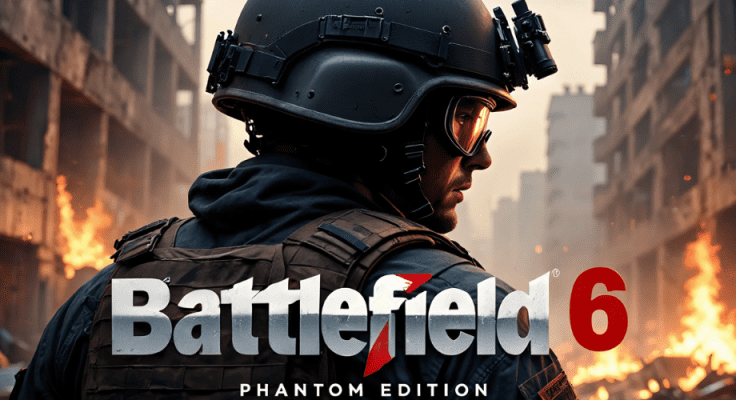Battlefield 6 Phantom Edition: Value or Vanity in a Premium Package
- Grace Lee
- 11 Aug, 25

Every new Battlefield arrives with a wave of hype, a sharpened appetite for big-team firefights, and a stack of premium editions that promise a head start and bragging rights. The so-called Phantom Edition leans into that tradition with moody, stealth-forward branding that immediately evokes the franchise’s history of secret challenges and hidden unlocks. But is that nameplate more than a coat of paint? Deciding whether it’s worth paying extra comes down to four pillars: practical content you’ll actually use, time advantages that translate into momentum, cosmetic flair that matters to you and your squad, and the long-tail of seasonal value. Add to that the modern Battlefield reality: no single-player campaign to offset the price, a competitive multiplayer focus with evolving metas, and an expectation of seasonal cadence. In other words, you’re paying primarily for an experience layered onto the core game, not a different game. With that frame set, let’s unpack what the edition likely includes and who it really serves.
What do you get beyond the base download? In line with recent publisher playbooks, the Phantom Edition is positioned to include early access days, the full first-year content track, and a curated cache of cosmetics. Think operator outfits that echo recon fantasy, matte-black weapon finishes with subtle tracer themes, vehicle skins tuned for night operations, and profile elements that broadcast your allegiance to the Phantom motif. Expect a year of battle passes bundled in, possibly with tier skips so you can bypass early grind hurdles, plus a digital artbook and soundtrack for fans who enjoy concept art and motifs. If cross-gen entitlement is part of the deal, that’s immediate utility for players planning a console upgrade. On the systems side, the Battlefield promise remains the same: large-scale maps, destructive set pieces, 128-player lobbies on supported hardware, and refined netcode and hit registration that amplify precision. The edition’s tangible power is not about better weapons; it’s about access, momentum, and identity inside an ever-expanding live service loop.
Value math starts with the price delta versus Standard. Suppose the base is the customary next-gen tag and Phantom sits a bracket or two higher. Bundle in four to six seasons of content, each battle pass typically priced à la carte, and the premium starts making sense if you know you’ll stay engaged for the entire year. Factor in the early access window: a few days ahead can convert into a meaningful advantage when you’re mapping recoil patterns, finding head-glitch angles, testing sights and suppressors, and learning traversal lanes before the broader population rushes in. However, cost-of-opportunity matters. If you’re unsure about launch performance, you can buy the Standard version, watch stability patches land, then upgrade to a season bundle later at essentially the same combined cost. Also consider platform policies: PC storefronts may offer brief refund windows, while console ecosystems vary by region. Regional pricing, taxes, and currency sales can swing the equation too, sometimes making the premium noticeably more attractive in specific markets.
Who benefits most? Players who run with a consistent squad, care about coordinated camos, and plan to play several nights a week will squeeze the most from the package. Early access helps squad leaders chart spawn routes, vehicle rotations, and gadget synergies before public metas calcify. Content creators gain from day-one differentiation and more time-on-task with new gadgets and vehicles, which often translates into guide-ready insights. If you love stealth aesthetics and want your presence on the field to feel curated rather than random drops from a loot track, the Phantom cosmetics add intangible yet real value. On the flip side, if you log on casually, prefer to unlock gear at a relaxed pace, or rarely finish seasonal tracks, the base game plus an occasional pass may be smarter. Remember the wider ecosystem: crossplay pools, input-based matchmaking, aim assist tuning, server tick rate, and frame pacing can influence your enjoyment far more than any cosmetic crate. The edition is an accelerant, not a magic wand.
So, is the Phantom Edition worth it? If you’re planning to live in Battlefield for the next year, crave that stealth-coded identity, and want guaranteed access to the full seasonal runway without fumbling through microtransaction math, it’s a confident buy. The extra days to learn maps and gadgets, plus bundled passes, can front-load your progress and keep FOMO at bay when mid-season drops arrive. If you’re on the fence about performance, prefer to evaluate the launch playlist and server stability, or simply don’t care about themed cosmetics, start with Standard and reassess after the first patch cycle. You can always upgrade once you’ve confirmed your engagement level and hardware comfort, especially if your friend group commits. In short, Phantom shines as a commitment booster for dedicated players; for everyone else, patience and a measured upgrade path protect your wallet while keeping your options open when the meta and roadmap come into clearer focus.













